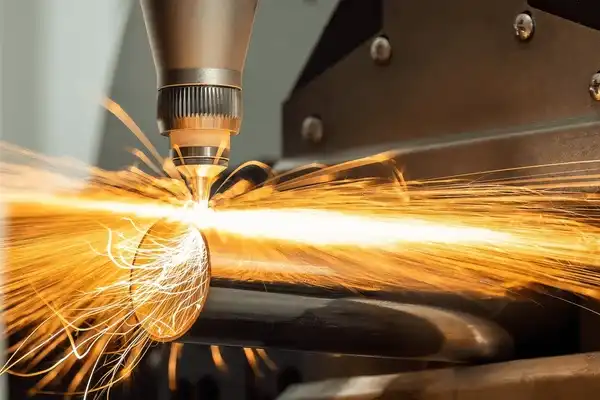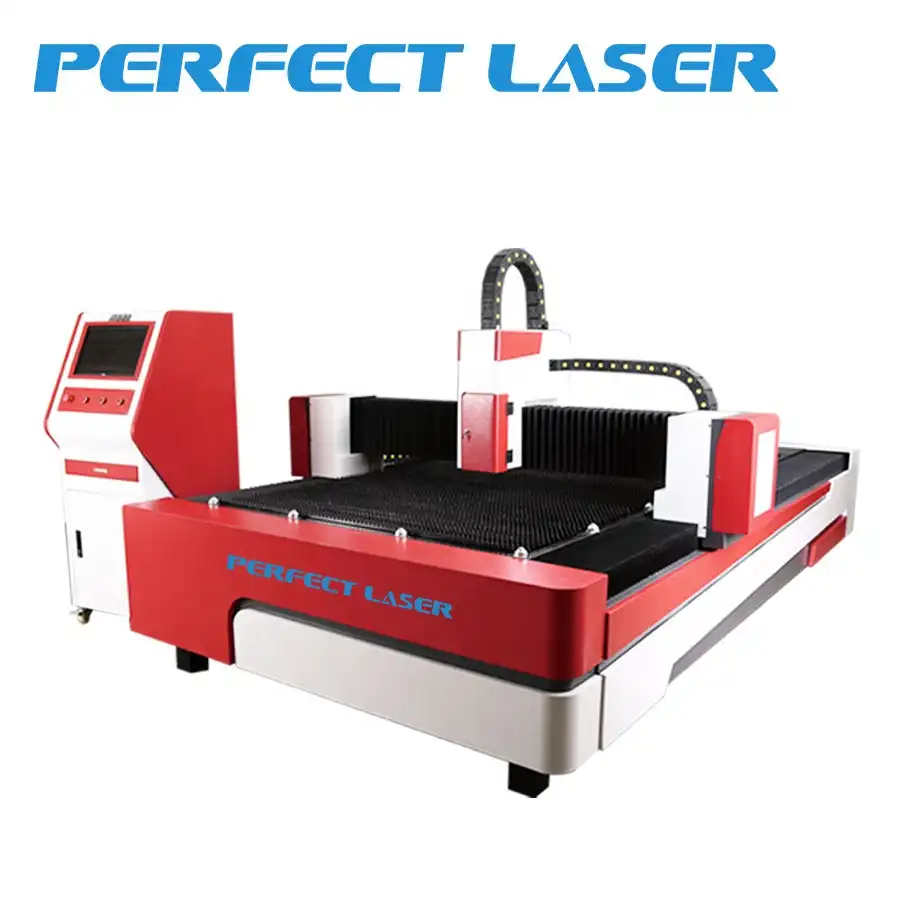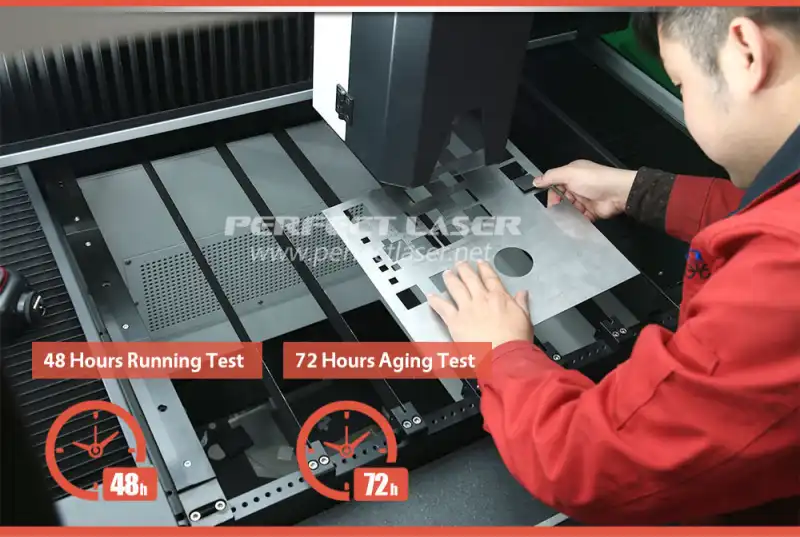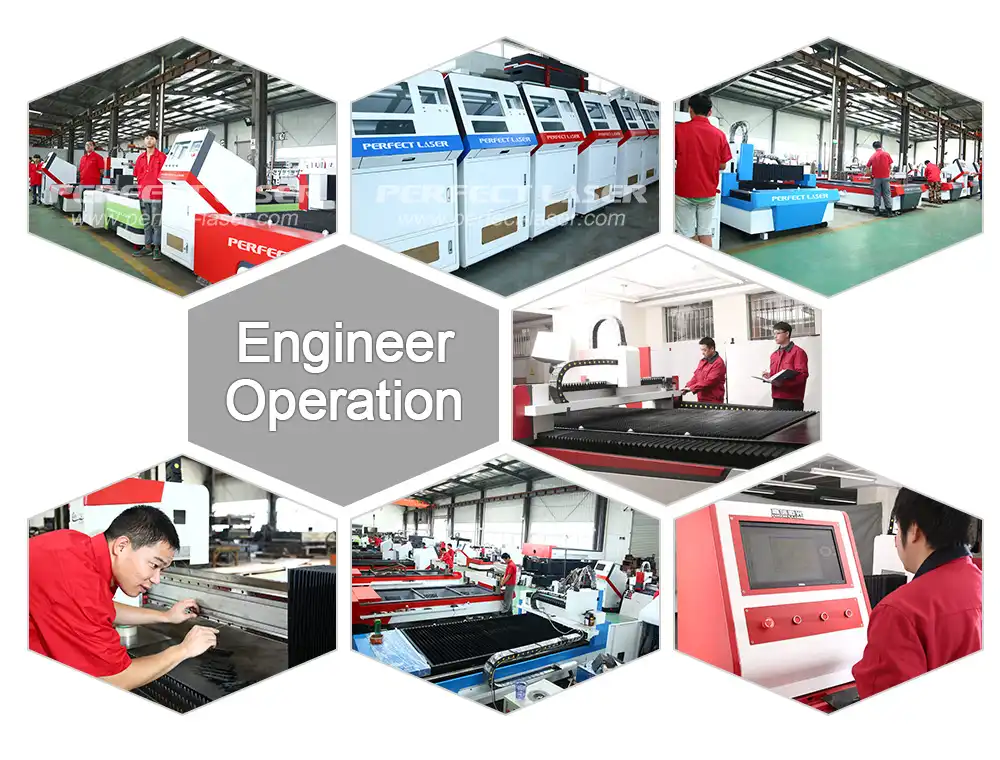Step-by-Step Guide to Setting Up a New Fiber Laser Cutter
Investing in a new fiber laser cutter is an exciting step for any manufacturing or fabrication business. These powerful machines offer precision, speed, and versatility for cutting a wide range of materials. However, proper setup is crucial to ensure optimal performance and longevity of your equipment. This comprehensive guide will walk you through the essential steps to get your new fiber laser cutter up and running smoothly.

Site Preparation: Electrical, Air Supply, and Cooling Requirements
Before your new fiber laser cutter arrives, it's important to prepare your facility to accommodate its specific needs. This preparation involves addressing three key areas: electrical supply, compressed air, and cooling systems.
Electrical Requirements
Fiber laser cutters require a stable and robust electrical supply. Typically, these machines operate on three-phase power, with voltage requirements ranging from 380V to 480V. Consult your machine's specifications and work with a certified electrician to ensure your facility can provide the necessary power.
Compressed Air Supply
Clean, dry compressed air is essential for optimal fiber laser cutter performance. The air supply helps to cool the cutting head and blow away debris during operation. Install an air compressor capable of delivering the required pressure and flow rate, along with appropriate filtration and drying systems.
Cooling System Setup
Fiber laser cutters generate significant heat during operation, necessitating an effective cooling system. Many machines come with built-in chillers, but some may require external cooling units. Ensure you have adequate space and connections for the cooling system, whether internal or external.

How to Properly Install and Calibrate the Laser Cutting Head?
The laser cutting head is the heart of your fiber laser cutter. Proper installation and calibration are crucial for achieving precise cuts and optimal performance.
Mounting the Cutting Head
Follow the manufacturer's instructions carefully when mounting the cutting head. Ensure all connections are secure and properly aligned. Pay special attention to the fiber optic cable, handling it with care to prevent damage.
Aligning the Laser Beam
Precise alignment of the laser beam is critical for accurate cutting. Use the alignment tools provided with your machine, such as alignment targets or specialized software, to ensure the beam is perfectly centered and focused.
Calibrating the Focal Length
The focal length of your laser determines the cutting performance for different material thicknesses. Calibrate the focal length according to the manufacturer's recommendations, typically using a test piece to fine-tune the settings.

Configuring Software and Importing Your First Design Files
With the hardware set up, it's time to configure the software, import design files, and conduct initial test runs.
Software Configuration
Install the control software provided by the manufacturer. The software will allow you to configure essential settings, such as the dimensions of the machine, power levels, cutting speeds, and specific material settings. It's important to get familiar with the software interface, ensuring you understand how to modify settings and use features like material selection, cutting modes, and simulation tools to ensure accuracy during operations.
Importing Design Files
Most fiber laser cutters accept various file formats, including DXF, DWG, and AI. To begin, import a simple test design to verify that the software can read the file correctly. Make sure that the elements in the design are properly scaled and positioned within the cutting area. This ensures that the cutter follows the correct path during the test run, leading to more accurate results and reducing the chances of errors during production.

Performing a Test Run
Before making an actual cut, it's essential to run a simulation using the software. The simulation will help you identify any potential issues with the design, cutting path, or material settings. It allows you to review the entire cutting process virtually, ensuring there are no mistakes that could damage the machine or result in poor-quality cuts.
After the simulation, load a test piece of material and begin the real cutting process. Start with lower power settings to ensure the material is cut safely and with minimal risk of damage. Gradually increase the power and adjust other parameters if necessary to fine-tune the cut quality.
Basic Maintenance Checks
Establish a routine maintenance schedule from day one. This should include:
- Cleaning the cutting head and nozzle
- Checking and replacing consumables as needed
- Inspecting and cleaning filters
- Verifying proper operation of safety systems
Conclusion
Setting up a new fiber laser cutter requires attention to detail and a methodical approach. By carefully addressing site preparation, proper installation, software configuration, and initial testing, you'll be well on your way to harnessing the full potential of your new equipment. Remember that ongoing maintenance and operator training are key to ensuring long-term success and productivity with your fiber laser cutter.

FAQ
Q: How long does it typically take to set up a new fiber laser cutter?
A: The setup time can vary depending on the specific model and your facility's readiness. Generally, allow 2-5 days for complete installation, calibration, and initial testing.
Q: What safety precautions should be taken when operating a fiber laser cutter?
A: Key safety measures include proper ventilation, use of protective eyewear, ensuring all safety interlocks are functioning, and establishing clear operating procedures for all personnel.
Q: How often should I calibrate my fiber laser cutter?
A: While daily checks are recommended, full calibration is typically needed every 3-6 months or when you notice a decline in cut quality. Always refer to your manufacturer's guidelines for specific recommendations.
Start Cutting Faster – Get Your Expert Installation Guide Today
Ready to elevate your manufacturing capabilities with a state-of-the-art fiber laser cutter? Perfect Laser, a leading name among fiber laser cutting machine manufacturers, offers a range of high-performance machines to suit your specific needs. With our 24-hour online service, free product consultation, and comprehensive after-sales support, you're assured of a smooth transition to laser cutting technology. Don't let the competition outpace you – contact us today at [email protected] to discuss how our fiber laser cutters can transform your production process.
References
- Johnson, R. (2022). "Advanced Fiber Laser Cutter Installation Techniques." Journal of Industrial Laser Applications, 45(3), 112-128.
- Smith, A. & Lee, T. (2021). "Optimizing Fiber Laser Cutter Performance: A Comprehensive Guide." Laser Technology Today, 18(2), 56-72.
- Brown, M. (2023). "Safety Protocols for High-Power Fiber Laser Systems in Manufacturing." International Journal of Laser Safety, 9(1), 23-39.
- Technical Committee on Laser Cutting. (2022). "Best Practices for Fiber Laser Cutter Setup and Maintenance." Industrial Laser Association Standards, 7th Edition.

share your inquiry, get the quotation accordingly.
第一张审核员说包含其他公司不能用_1755049724891.webp)
Perfect Laser – Global Manufacturer of Reliable Laser Solutions




